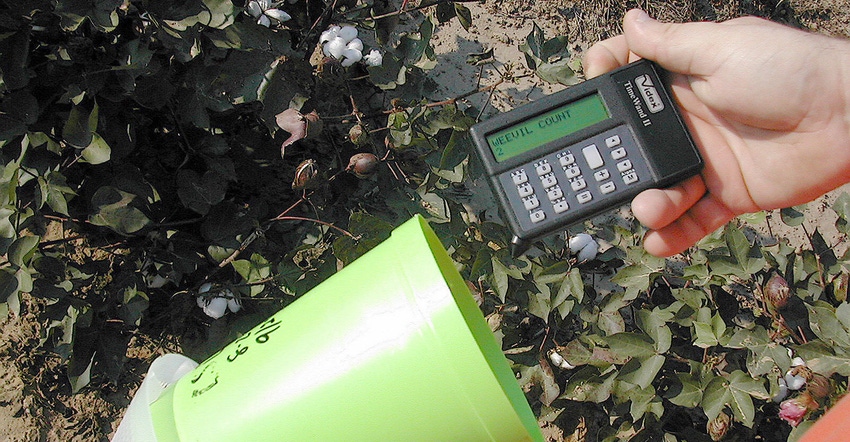
My one-year anniversary as a Delta Farm Press field editor was this past November. I never imagined I could be working with the very organization for which I freelanced for a while and had worked so closely with over 20 years submitting articles about Cotton Incorporated’s research and promotion efforts. When Farm Press Senior Content Director Ron Smith walked up to me after a media dinner just one month earlier asking if I would like to join the Farm Press team, I’m sure my attempted poker face failed miserably.
One of my first assignments was to pen a feature on the history, impact, and success of the Boll Weevil Eradication Program (BWEP). While conducting research for the piece, I spoke with previous Cotton Incorporated entomologists like Drs. Pat O’Leary and Frank Carter. During their tenures at Cotton Incorporated, they administered and worked on boll weevil-centric research leading to improved understanding of the diapause phase of boll weevils, as well as technologies which were subsequently used to eradicate the long-snouted cotton pest.
The success of the BWEP was without question a major factor contributing to the resurgence and profitability of cotton production in the United States.
I recently spoke with a Mississippi cotton producer about his operation and what developments and/or innovations over his 45 years of farming have contributed to his success. His answer was two-fold: improved seed genetics and the BWEP. He recounted his farming years before eradication, and how countless times he would just have to give up attempting control. Many years his top crop was void of harvestable bolls that had been destroyed from relentless assaults of voracious boll-piercing weevils.
North Carolina cotton producer Marshall Grant witnessed the statewide destruction and was instrumental in energizing a regional eradication effort. Even much greater than that, he understood the necessity of expanding that effort across the Cotton Belt to avoid having weevils just migrate to other fields or states. Grant has always been a frugal man. His son, David, says even today, his dad still reuses coffee filters.
For a man to have such vision and dedicate so much of his life to a broader cause underpins the importance of continuing the boll weevil eradication maintenance program being governed and guided by organizations like the Missouri Cotton Growers Association (MCGA). The MCGA will be holding informational meetings this month to underscore the importance to all Missouri cotton producers of voting “yes” on the coming referendum to provide adequate funding for ongoing program maintenance. Grower-directed ballots will be mailed in early February.
I just hope when all cotton producers, like those in Missouri, have an opportunity to support an effort like this, they have the Marshall Grant-like vision it takes to help protect the future of U.S. cotton production.
About the Author(s)
You May Also Like




